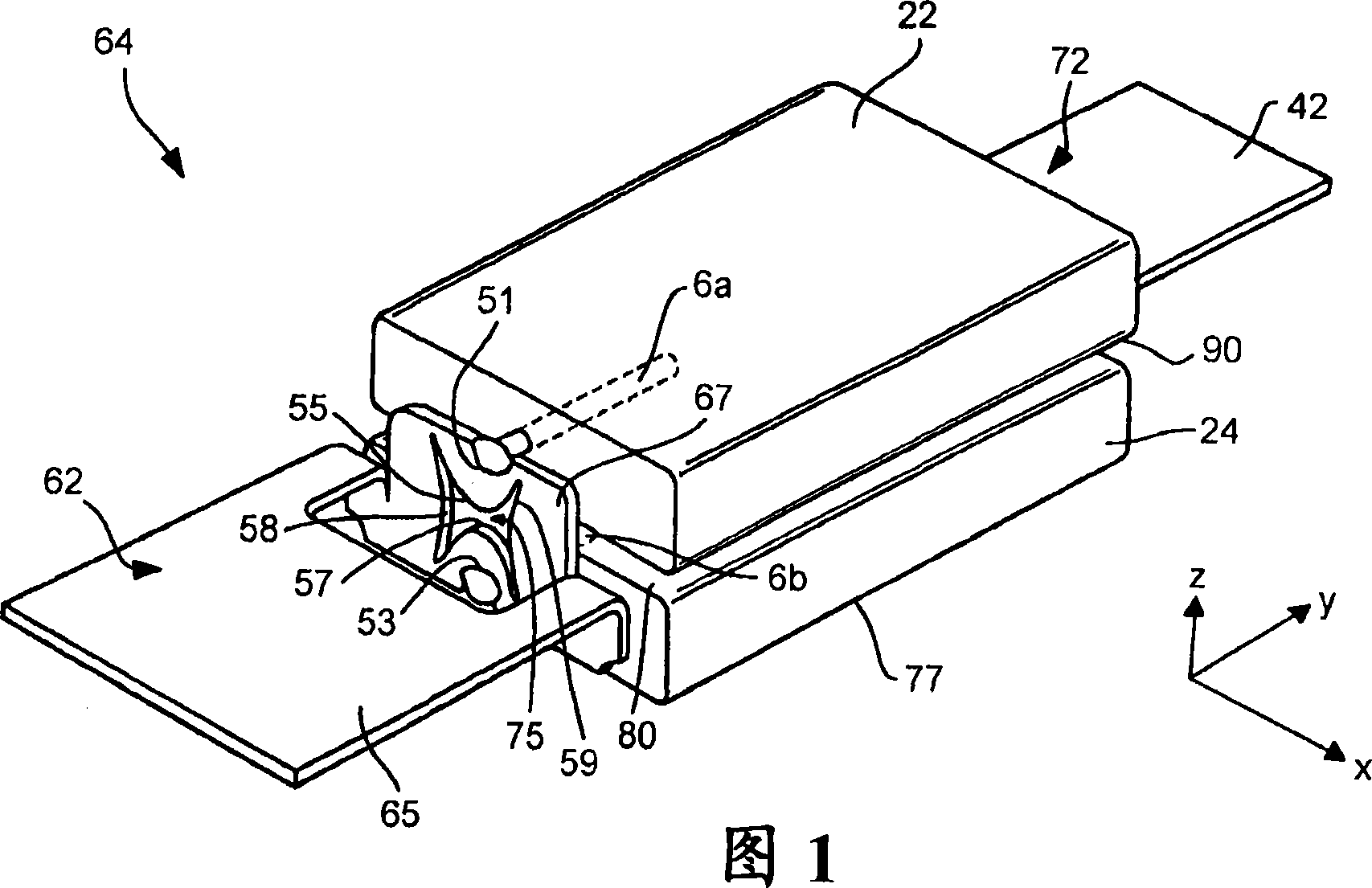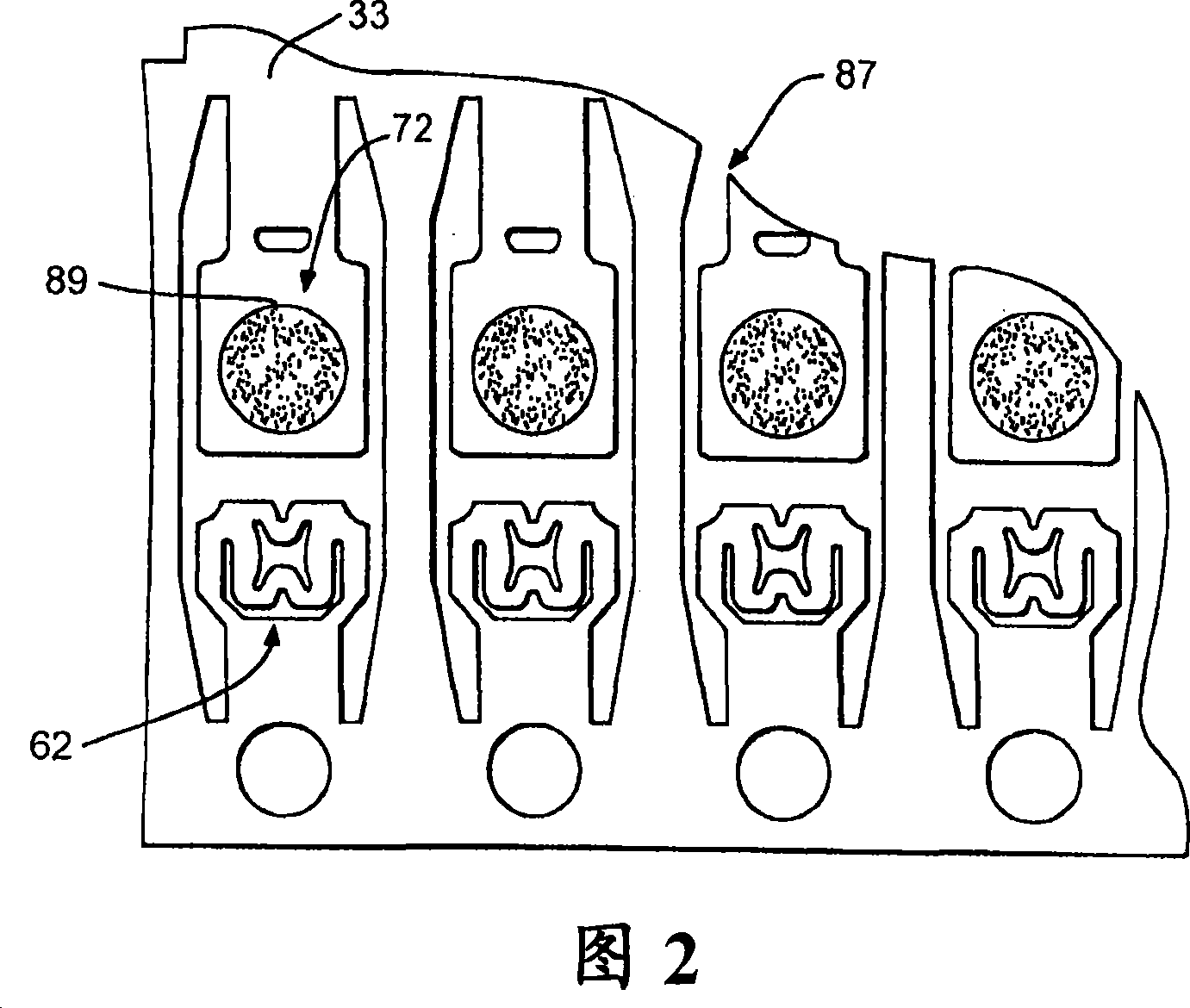Solid electrolytic capacitor assembly
一种固体电解电容、电容组件的技术,应用在固体电解电容器、电解电容器、电容器零部件等方向,能够解决电容器损坏、瓶颈过热等问题
- Summary
- Abstract
- Description
- Claims
- Application Information
AI Technical Summary
Problems solved by technology
Method used
Image
Examples
example 1
[0056] Two tantalum capacitor elements are used to form a capacitor assembly as previously described and shown in FIGS. 1 to 8 . The tantalum powder used to form each capacitive element had a charge to mass ratio of 150,000 μF*V / g (available from H.C. Starck Company). The tantalum powder was compressed using known techniques such that the resulting pellets had a length of approximately 5.35 mm, a width of 3.7 mm and a thickness of 0.75 mm. The pellets were sintered at 1245°C for 10 minutes. The pellets were anodized at 15 volts, impregnated with manganese dioxide, and coated with graphite and silver layers in the manner previously described. Each individual tantalum portion has a capacitance of approximately 500 μF. These sections were then connected in parallel with the common anode and cathode terminals as previously described so that the final capacitance of the assembly was about 1000 μF and the nominal voltage was 4 volts. These capacitive assemblies were packaged in a...
example 2
[0063] Two niobium oxide ("NbO") capacitive elements were used to construct the capacitive assembly as previously described and illustrated in FIGS. 1-8. The niobium oxide powder used to form these capacitive elements had a charge to mass ratio of 80,000 μF*V / g (available from H.C. Starck Company). The niobium oxide powder was pressed using known techniques so that the resulting pellets had a length of approximately 5.35 mm, a width of 3.7 mm and a thickness of 0.75 mm. The pellets were sintered at 1380°C for 10 minutes. The pellets were anodized at 27 volts, impregnated with manganese dioxide, and coated with graphite and silver layers in the manner previously described. Each individual niobium oxide portion has a capacitance of about 110 μF. These sections were then connected in parallel with the common anode and cathode terminals as previously described so that the final capacitance of the assembly was about 220 μF and the nominal voltage was 4 volts. These capacitive as...
example 3
[0065] The capacitor was constructed as described in Example 2, except that the anode was slotted and a forming voltage of 21 volts was used. A slotted anode has two parallel grooves that run along the entire length of the anode on each side (-x direction). Each groove has a width of 0.4 mm and a thickness of 0.25 mm. The slotted anode had a length of 5.35 mm, a width of 3.7 mm and a thickness of 0.76 mm.
PUM
 Login to View More
Login to View More Abstract
Description
Claims
Application Information
 Login to View More
Login to View More - Generate Ideas
- Intellectual Property
- Life Sciences
- Materials
- Tech Scout
- Unparalleled Data Quality
- Higher Quality Content
- 60% Fewer Hallucinations
Browse by: Latest US Patents, China's latest patents, Technical Efficacy Thesaurus, Application Domain, Technology Topic, Popular Technical Reports.
© 2025 PatSnap. All rights reserved.Legal|Privacy policy|Modern Slavery Act Transparency Statement|Sitemap|About US| Contact US: help@patsnap.com



